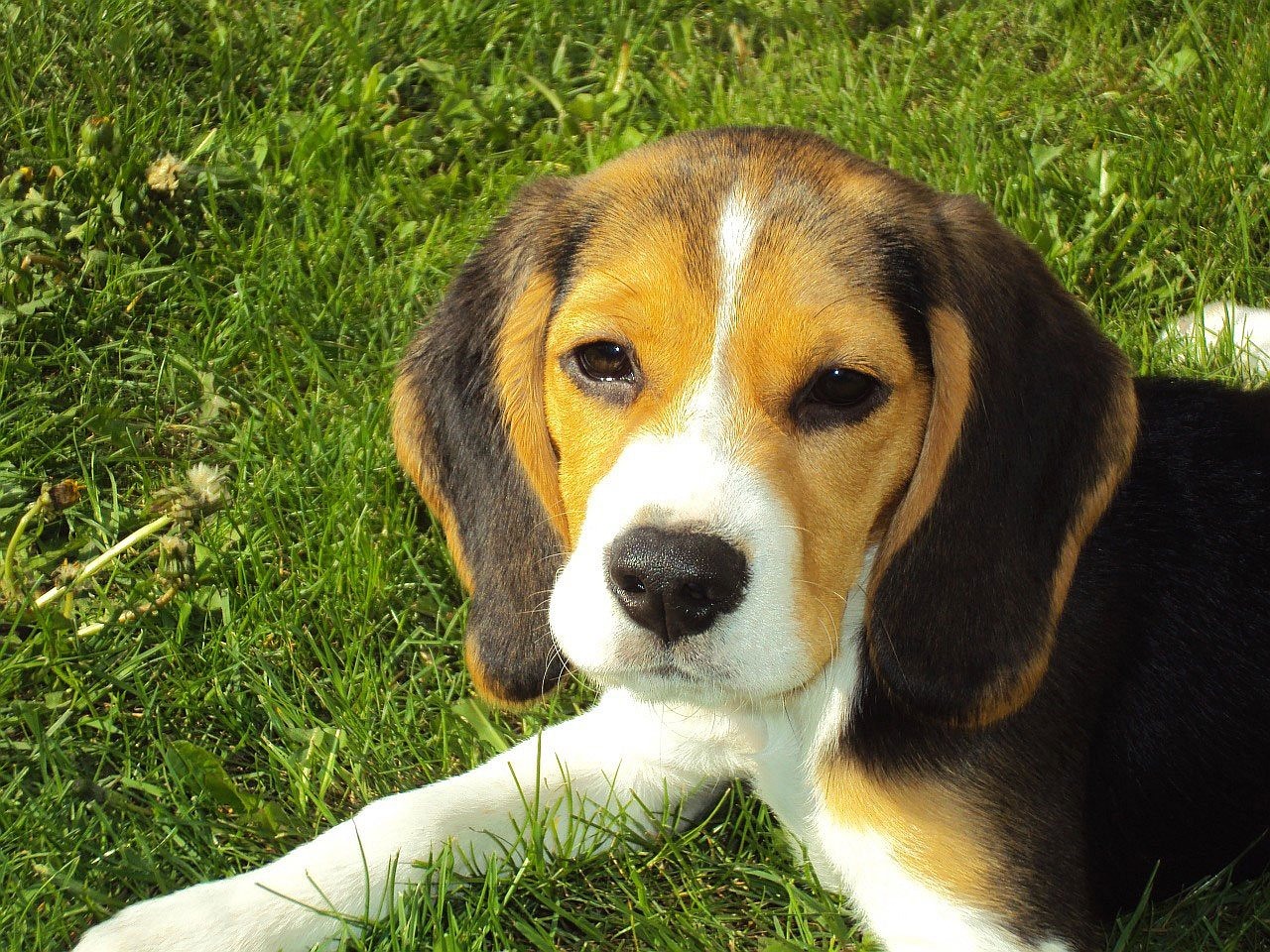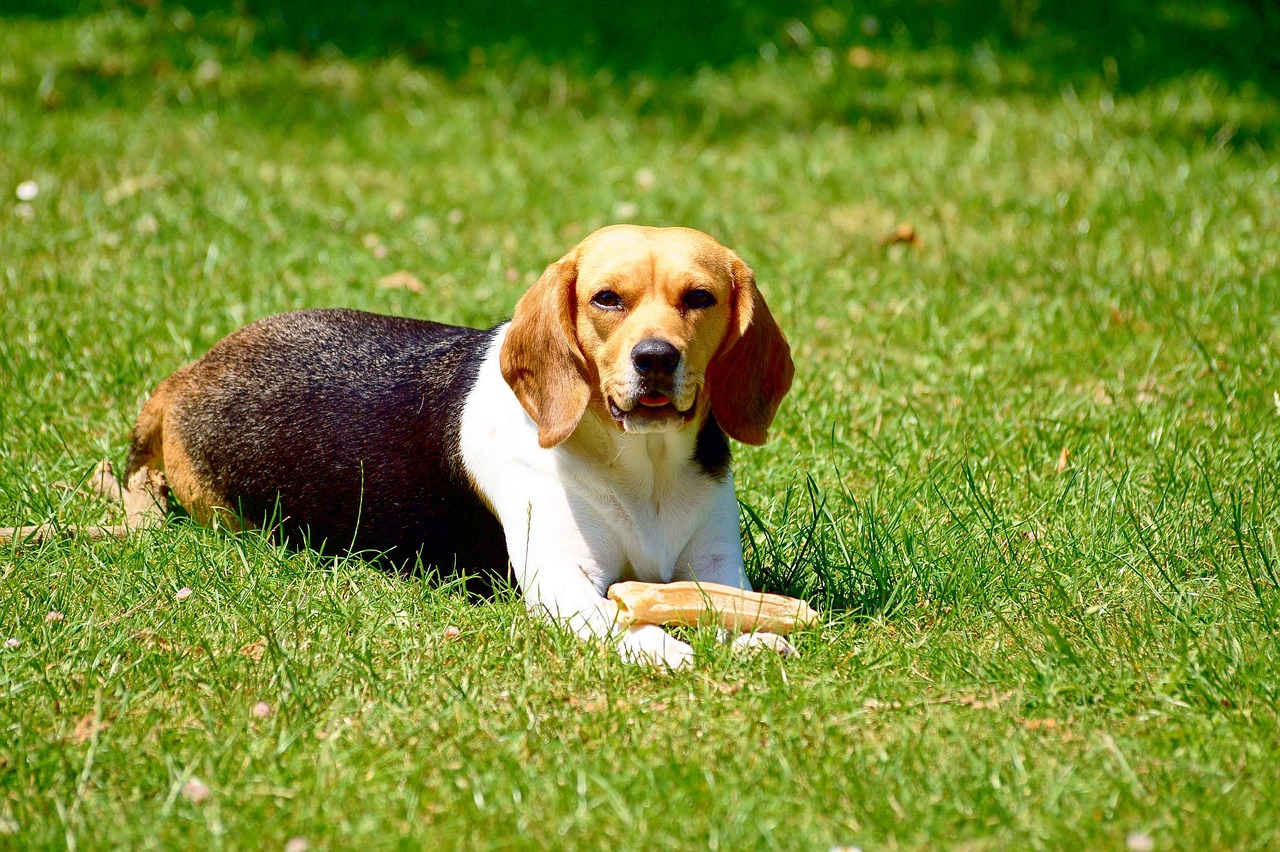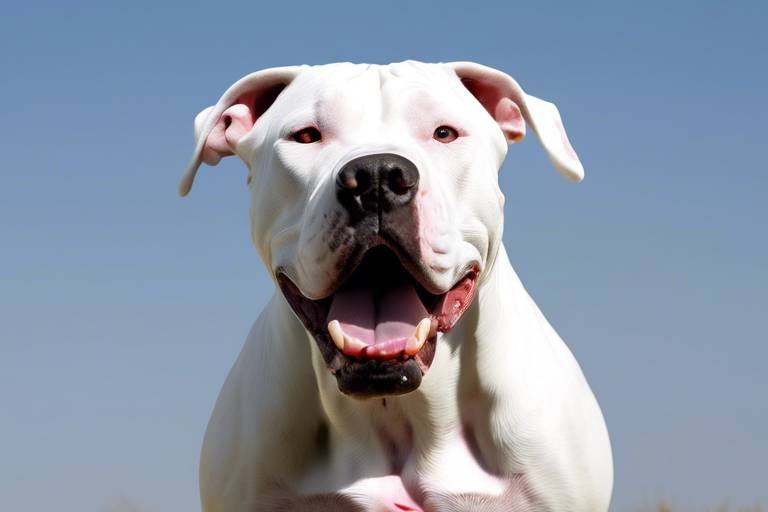Why Beagles Are Great Family Pets
If you're on the fence about which dog breed to welcome into your home, let me present you with a fantastic option: the Beagle! These adorable little hounds have a charm that can win over even the most skeptical family members. Their friendly disposition, playful energy, and adaptability make them ideal companions for families of all shapes and sizes. Imagine coming home after a long day, and there’s your Beagle, tail wagging and ready to greet you with pure joy. That’s the kind of love and happiness they bring into a household!
Beagles are not just pets; they are family members who thrive on companionship. They have an innate ability to connect with both children and adults, fostering a nurturing environment that strengthens family bonds. Their playful antics and curious nature can turn a mundane day into an exciting adventure. Whether it's chasing after a ball in the yard or snuggling up on the couch for movie night, Beagles know how to make every moment special.
But what truly sets Beagles apart is their adaptability. They can fit into various lifestyles, whether you live in a bustling city apartment or a spacious house in the suburbs. All they need is love, attention, and a bit of exercise to keep their tails wagging and spirits high. If you're looking for a loyal companion who will stand by you through thick and thin, a Beagle might just be the perfect addition to your family!
Beagles are known for their friendly and sociable nature, making them excellent companions for children and adults alike. Their playful demeanor fosters strong family bonds and creates a joyful home environment. These dogs are inherently curious and love to explore their surroundings, which makes them great playmates for kids. Just picture this: your children running around the yard, laughter filling the air, while your Beagle joyfully joins in the fun, tail wagging like a flag in the breeze.
Beagles possess a keen sense of smell and intelligence, which can be harnessed for training. Understanding their unique learning style is essential to effectively train them and ensure good behavior. Unlike some breeds that are eager to please, Beagles can be a bit more independent, which means training requires patience and creativity. Incorporating fun activities that stimulate their minds can make the training process enjoyable for both you and your Beagle.
Using positive reinforcement techniques, such as treats and praise, helps motivate Beagles during training sessions. This approach fosters a trusting relationship between the dog and owner, leading to better results. Imagine rewarding your Beagle with a tasty treat after they successfully sit on command; the joy in their eyes is priceless! This method not only encourages good behavior but also strengthens the bond you share.
Beagles can sometimes exhibit stubbornness or distraction during training. Identifying these challenges early on can help owners implement effective strategies to keep their Beagle focused and engaged. For instance, if your Beagle gets distracted by the smell of something delicious, try conducting training sessions in a quiet area or using their favorite toys as a distraction. Remember, every Beagle is unique, and finding what works best for yours is part of the journey!
Early socialization is crucial for Beagles to develop well-rounded personalities. Exposing them to various environments, people, and other pets helps reduce fear and anxiety in new situations. A well-socialized Beagle is typically more confident and adaptable, making outings to parks or family gatherings a breeze. So, take your Beagle on adventures—every new experience is a chance for them to learn and grow!
Beagles require regular exercise to maintain their physical health and prevent obesity. Engaging in daily walks and playtime is essential to keep them happy and healthy. Think of it this way: a tired Beagle is a happy Beagle! Regular physical activity not only keeps them fit but also helps alleviate behavioral issues that can arise from pent-up energy. So, grab that leash and get moving—your Beagle will thank you!
Beagles are known for their gentle nature, making them great companions for children. Their playful attitude encourages interaction and bonding, creating a fun atmosphere in family settings. Children can learn valuable lessons about empathy and responsibility through their interactions with Beagles. Just imagine your child giggling as they play fetch with their furry friend, creating memories that will last a lifetime.
While Beagles are generally good with kids, supervision during playtime is important. Teaching children how to interact with dogs respectfully ensures a safe and enjoyable experience for everyone. Setting ground rules can help prevent any accidental roughhousing that could lead to misunderstandings. After all, it's essential to foster a relationship built on trust and respect between your Beagle and your children.
Owning a Beagle can teach children valuable lessons in responsibility and empathy. Involving them in care routines helps foster a sense of accountability and strengthens family connections. Whether it’s feeding, grooming, or taking the dog for walks, these tasks can instill a sense of pride in your children. Plus, watching them care for their Beagle can be a heartwarming sight!
- Are Beagles good with other pets? Yes, Beagles are generally friendly and can coexist with other pets, especially if socialized early.
- How much exercise do Beagles need? Beagles require at least 30-60 minutes of exercise daily to stay healthy and happy.
- Do Beagles shed a lot? Beagles do shed, but regular grooming can help manage their coat and minimize shedding.
- Are Beagles easy to train? Beagles can be trained, but they may require more patience and positive reinforcement due to their independent nature.

Temperament of Beagles
Beagles are known for their friendly and sociable nature, which makes them ideal companions for families. Their playful demeanor not only fosters strong bonds within the family but also creates a joyful and vibrant home environment. Imagine coming home after a long day and being greeted by a wagging tail and a face full of excitement; that’s a Beagle for you! They thrive on companionship and love being part of family activities, whether it's playing in the yard or snuggling on the couch.
One of the most remarkable traits of Beagles is their curiosity. These dogs are naturally inquisitive, always eager to explore their surroundings. This trait can lead to some amusing situations, as they might find themselves investigating every nook and cranny of your home or yard. However, this curiosity also means they require a stimulating environment to keep them engaged. Regular playtime and mental challenges, such as puzzle toys, can help satisfy their need for exploration.
Additionally, Beagles are known for their gentle disposition, making them excellent companions for children. Their playful attitude encourages interaction, and they often form strong bonds with younger family members. It’s not uncommon to see a Beagle and a child playing together, sharing laughter and joy. However, it’s essential to teach children how to interact with dogs respectfully, ensuring a safe and enjoyable experience for everyone involved.
To further illustrate the temperament of Beagles, let’s take a look at some of their key personality traits:
| Trait | Description |
|---|---|
| Friendly | Beagles are social dogs that enjoy being around people and other pets. |
| Playful | They have a playful nature that brings joy and energy to the household. |
| Curious | Beagles love to explore their environment, which can lead to mischief if not supervised. |
| Affectionate | They are known for their loving nature, enjoying cuddles and companionship. |
In essence, the temperament of Beagles makes them a wonderful addition to any family. Their ability to connect with people and their playful spirit create a warm and loving atmosphere. Whether you're looking for a loyal friend or a playful companion, a Beagle can fill that role beautifully.
- Are Beagles good with children? Yes, Beagles are known for their gentle nature and are generally great companions for children.
- How much exercise do Beagles need? Beagles require regular exercise, ideally daily walks and playtime, to stay healthy and happy.
- Are Beagles easy to train? While Beagles are intelligent, they can be stubborn. Using positive reinforcement techniques can help with training.
- Do Beagles get along with other pets? Yes, with proper socialization, Beagles can get along well with other pets in the household.

Intelligence and Trainability
This article explores the qualities that make Beagles ideal companions for families, including their temperament, intelligence, and adaptability. We will also discuss care tips and training strategies for Beagle owners.
Beagles are known for their friendly and sociable nature, making them excellent companions for children and adults alike. Their playful demeanor fosters strong family bonds and creates a joyful home environment.
When it comes to intelligence, Beagles are no slouches! They possess a remarkable sense of smell, which is why they are often used in search and rescue operations or as detection dogs. This innate ability is paired with a curious nature, making them eager to explore and learn. However, training a Beagle can be a bit of a double-edged sword. Their intelligence can lead to a stubborn streak, and they might not always be as eager to follow commands as other breeds. But don't let that discourage you! With the right approach, you can harness their intelligence effectively.
Understanding their unique learning style is essential for successful training. Beagles thrive on positive reinforcement, which means they respond best to rewards like treats, praise, and playtime. This method creates a trusting bond between the dog and owner, making training sessions not just effective but also enjoyable. For example, if your Beagle sits on command, shower them with praise and a tasty treat. This positive feedback encourages them to repeat the behavior.
Utilizing positive reinforcement techniques can transform your training sessions into a fun and rewarding experience. Here are some effective strategies:
- Use High-Value Treats: Find treats that your Beagle absolutely loves. This could be small pieces of chicken or special dog biscuits.
- Praise and Affection: Don’t underestimate the power of your voice! A happy tone and a good belly rub can work wonders.
- Short Training Sessions: Beagles have a short attention span, so keep training sessions brief but frequent to maintain their focus.
By incorporating these techniques, you'll create a dynamic training environment that keeps your Beagle engaged and eager to learn.
Despite their intelligence, Beagles can sometimes exhibit stubbornness or distraction during training. This is especially true if they catch a whiff of something interesting. Identifying these challenges early on can help owners implement effective strategies to keep their Beagle focused and engaged. For instance, if your Beagle is easily distracted by scents, try training in a quiet environment before gradually introducing more stimulating surroundings.
Early socialization is crucial for Beagles to develop well-rounded personalities. Exposing them to various environments, people, and other pets helps reduce fear and anxiety in new situations. Consider enrolling your Beagle in puppy classes or arranging playdates with other dogs. This not only helps with their social skills but also reinforces their training in a fun way!
Beagles require regular exercise to maintain their physical health and prevent obesity. Engaging in daily walks and playtime is essential to keep them happy and healthy.
Beagles are known for their gentle nature, making them great companions for children. Their playful attitude encourages interaction and bonding, creating a fun atmosphere in family settings.
While Beagles are generally good with kids, supervision during playtime is important. Teaching children how to interact with dogs respectfully ensures a safe and enjoyable experience for everyone.
Owning a Beagle can teach children valuable lessons in responsibility and empathy. Involving them in care routines helps foster a sense of accountability and strengthens family connections.
Q: Are Beagles good with other pets?
A: Yes, Beagles can get along well with other pets if they are properly socialized from a young age.
Q: How much exercise do Beagles need?
A: Beagles typically require at least 30 to 60 minutes of exercise daily to stay healthy and happy.
Q: Are Beagles easy to train?
A: Beagles can be trained effectively using positive reinforcement, but they may require patience due to their independent nature.
Q: Do Beagles shed a lot?
A: Beagles do shed, but regular grooming can help manage the amount of hair around your home.
Positive Reinforcement Techniques
When it comes to training your Beagle, positive reinforcement is the golden rule. This method is all about rewarding your furry friend for good behavior rather than punishing them for the bad. Imagine if every time you did something right at work, your boss handed you a bonus or a compliment instead of a reprimand for mistakes. Wouldn’t that make you more motivated? That’s precisely the effect positive reinforcement has on Beagles. They thrive on praise and rewards, which makes training not only effective but also enjoyable for both you and your pet.
Using treats is one of the most effective ways to implement positive reinforcement. Every time your Beagle follows a command or exhibits good behavior, reward them with a small treat. This creates a strong association between the action and the reward in their mind. It’s crucial to choose treats that are not only tasty but also healthy. You don’t want to overdo it and end up with a chubby Beagle! Here’s a quick table to help you choose the right treats:
| Treat Type | Pros | Cons |
|---|---|---|
| Commercial Dog Treats | Convenient, Variety | Can be high in calories |
| Fruits & Vegetables | Healthy, Low-Calorie | Not all are safe (e.g., grapes) |
| Homemade Treats | Customizable, Fresh | Time-consuming to prepare |
In addition to treats, verbal praise is equally important. When your Beagle performs a trick or obeys a command, shower them with enthusiastic words like "Good boy!" or "Well done!" Your tone should be upbeat and excited, as Beagles are incredibly perceptive to human emotions. They’ll pick up on your enthusiasm and feel proud of themselves, which reinforces their desire to please you.
Another effective technique is to incorporate play into your training sessions. Beagles are naturally playful, so combining training with their favorite game can make the process fun and engaging. For instance, after your Beagle successfully sits on command, you could toss their favorite toy as a reward. This not only reinforces their learning but also strengthens your bond through shared activities.
However, it’s essential to keep training sessions short and sweet. Beagles have a short attention span, so aim for 5-10 minute sessions a few times a day. This way, they remain focused and eager to learn. If you notice their attention drifting, it’s time to wrap things up and try again later. Remember, the goal is to create a positive experience that they look forward to rather than a chore they dread.
Lastly, consistency is key. Make sure that everyone in the household uses the same commands and rewards to avoid confusing your Beagle. If one person uses "sit" while another says "down," it can lead to frustration for both the dog and the trainer. By being consistent, you'll help your Beagle learn faster and feel more secure in their training.
In summary, positive reinforcement is not just about giving treats; it’s about creating an environment where your Beagle feels loved, motivated, and eager to learn. With a little patience and creativity, you’ll be amazed at how quickly your Beagle picks up commands and tricks, turning training into a fun adventure for both of you!
- What is the best method for training a Beagle? Positive reinforcement is the most effective method for training Beagles, as they respond well to rewards and praise.
- How long should training sessions last? Keep training sessions to about 5-10 minutes to maintain your Beagle's focus and interest.
- Can I use regular food as treats? Yes, you can use small pieces of your Beagle's regular food as treats, but ensure they are healthy and not too high in calories.
- What should I do if my Beagle is not responding to training? If your Beagle is distracted or not responding, try shortening the training session or changing the environment to minimize distractions.
Common Training Challenges
Training a Beagle can be a delightful yet challenging experience. One of the most significant hurdles that owners often face is their stubbornness. Beagles are known for their independent spirit, which can sometimes translate into a reluctance to follow commands. This is especially true when they catch a whiff of something interesting, as their incredible sense of smell can lead them astray. Imagine trying to get a child to focus on homework while a delicious pizza is baking in the oven—this is what it can feel like when training a Beagle!
Another common challenge is their distraction. Beagles are naturally curious and easily fascinated by their surroundings. A rustling leaf, a passing squirrel, or even a distant sound can divert their attention away from training. To help mitigate this, it’s crucial to create a training environment that minimizes distractions. Think of it as setting the stage for a play; the fewer interruptions, the better the performance!
Additionally, Beagles can become overly excited during training sessions. Their playful nature can lead to jumping, barking, or other behaviors that might make it difficult to focus on learning. It’s essential to establish a calm atmosphere before starting any training. You might want to incorporate short training sessions with plenty of breaks to keep their enthusiasm in check, much like a teacher would with young students to maintain their engagement.
To address these challenges, owners can implement several strategies:
- Use short, engaging training sessions to hold their attention.
- Incorporate their favorite toys or treats to keep them motivated.
- Practice commands in quiet, familiar environments before introducing distractions.
By acknowledging these common training challenges and applying effective strategies, Beagle owners can foster a more productive training experience. Remember, patience is key! With consistent effort and understanding, you can help your Beagle become a well-behaved family member.
Q: Are Beagles easy to train?
A: Beagles can be trained, but they may require more patience and creativity due to their stubbornness and distractible nature. Using positive reinforcement techniques can significantly enhance the training process.
Q: How long does it take to train a Beagle?
A: The time it takes to train a Beagle varies depending on the individual dog and the consistency of training. Generally, owners can expect to see progress within a few weeks with regular practice.
Q: Can Beagles be trained to obey commands off-leash?
A: While it is possible to train Beagles to obey commands off-leash, it requires a strong recall and a controlled environment. Owners should always prioritize safety and consider using a leash in open areas.
Socialization Importance
When it comes to raising a Beagle, socialization is not just a good idea; it's essential! Think of it as giving your furry friend a passport to the world. Just like humans, Beagles need to experience different environments, people, and other animals to develop a well-rounded personality. Early exposure helps them learn how to react appropriately in various situations, reducing the likelihood of fear and anxiety later on. Imagine a Beagle that’s confident and calm in new surroundings compared to one that’s timid and fearful—it’s a game changer!
Starting from a young age, introducing your Beagle to different experiences can be incredibly beneficial. This includes taking them to parks, dog-friendly events, and even pet stores. The more diverse their experiences, the more adaptable they become. It’s like teaching them a new language; the earlier you start, the easier it is for them to learn. You can also invite friends over to meet your Beagle, allowing them to interact with various people. This exposure helps them build trust and comfort with strangers, which is crucial for their overall happiness.
Moreover, socialization can significantly impact their behavior. A well-socialized Beagle is less likely to exhibit aggressive tendencies or fear-based reactions. Instead, they’ll be more inclined to approach new situations with curiosity rather than apprehension. This is particularly important because Beagles are naturally curious creatures, and their instincts can sometimes lead them into trouble if they’re not properly socialized. For instance, a Beagle that hasn’t been exposed to other dogs may react negatively when encountering them, leading to unwanted conflicts.
To make the most of your Beagle's socialization journey, consider the following tips:
- Start Early: Begin socializing your Beagle as soon as you bring them home.
- Variety is Key: Expose them to different environments, sounds, and people.
- Positive Experiences: Ensure each interaction is positive, using treats and praise to reinforce good behavior.
- Monitor Play: Keep an eye on your Beagle during playdates to ensure they’re comfortable and having fun.
In summary, socialization is a vital aspect of raising a happy and well-adjusted Beagle. By prioritizing their exposure to diverse experiences, you’re setting them up for a lifetime of joy and confidence. Remember, a well-socialized Beagle not only enhances their quality of life but also strengthens the bond between you and your furry friend. So, get out there and let your Beagle explore the world!
- How early should I start socializing my Beagle? It's best to start as soon as you bring them home, ideally between 3 to 14 weeks of age.
- What are some signs that my Beagle is well-socialized? Look for signs like calmness in new situations, friendly interactions with other dogs and people, and a general curiosity about their environment.
- Can I over-socialize my Beagle? While socialization is important, too much exposure to overwhelming situations can lead to stress. Always ensure that experiences are positive and manageable.
- What if my Beagle shows fear or aggression during socialization? Consult a professional trainer or behaviorist for guidance on how to handle these situations effectively.
Maintaining Physical Health
When it comes to keeping your Beagle healthy, regular exercise is absolutely essential. Beagles are energetic dogs that were originally bred for hunting, and they require plenty of physical activity to stay happy and fit. Think of your Beagle as a little ball of energy that needs to be released; without enough exercise, they can become bored and even develop behavioral issues. Daily walks, playtime in the backyard, or even trips to the dog park can make a world of difference in their well-being.
It's important to establish a routine that includes at least 30 to 60 minutes of exercise each day. This can include a combination of brisk walks, playful fetch sessions, and interactive games that stimulate both their body and mind. Engaging your Beagle in activities that challenge them mentally, such as puzzle toys or scent games, can also keep them sharp and prevent boredom. After all, a tired Beagle is a happy Beagle!
But don't forget about their diet! Proper nutrition plays a crucial role in maintaining your Beagle's physical health. Beagles are prone to obesity, so it's essential to monitor their food intake and ensure they are eating a balanced diet. Consider the following tips when it comes to feeding your Beagle:
- Choose high-quality dog food that meets their nutritional needs.
- Measure their food portions to avoid overfeeding.
- Limit treats and opt for healthy options like carrots or green beans.
- Consult your veterinarian for dietary recommendations tailored to your Beagle's age and activity level.
Regular check-ups with your veterinarian are also vital. These visits can help catch any potential health issues early, ensuring your Beagle remains in top shape. Vaccinations, flea and tick prevention, and dental care are all part of a comprehensive health plan. Remember, maintaining your Beagle's physical health is not just about exercise and diet; it’s about creating a well-rounded lifestyle that includes love, care, and attention.
In summary, keeping your Beagle physically healthy involves a mix of regular exercise, a balanced diet, and routine veterinary care. By dedicating time to their physical needs, you are not only enhancing their quality of life but also strengthening the bond you share. So grab that leash, put on your walking shoes, and get ready for some fun adventures with your furry friend!
Here are some common questions that new Beagle owners often have:
- How much exercise does a Beagle need? - Beagles typically require about 30 to 60 minutes of exercise each day to stay healthy and happy.
- What should I feed my Beagle? - A high-quality dog food with balanced nutrition is essential. Consult your vet for specific recommendations.
- Are Beagles prone to any health issues? - Yes, Beagles can be prone to obesity and certain genetic conditions. Regular vet check-ups can help monitor their health.
- How can I keep my Beagle engaged? - Incorporate interactive games, puzzle toys, and scent games into their routine to keep their minds stimulated.

Compatibility with Children
When it comes to family pets, Beagles truly shine as one of the best choices for households with children. Their gentle nature and playful demeanor make them fantastic companions for kids of all ages. Imagine a furry friend who not only loves to play but also brings joy and laughter into your home! Beagles are known for their ability to connect with children, often forming strong bonds that last a lifetime. This connection fosters an environment filled with happiness and love, making family moments even more special.
One of the standout traits of Beagles is their playfulness. They have an endless supply of energy, which makes them the perfect playmates for kids. Whether it's a game of fetch in the backyard or a playful romp around the house, Beagles thrive on interaction. This playful attitude encourages children to engage and bond with their canine companions, creating lasting memories. However, it's essential to supervise playtime to ensure that both the dog and the children are safe and having fun.
Teaching children how to interact with Beagles is crucial. Kids should learn to approach dogs with respect and understanding. For instance, showing them how to gently pet and play with their furry friends can lead to a more harmonious relationship. Parents can emphasize the importance of gentleness and patience when engaging with their Beagle, ensuring that both parties feel comfortable during interactions. This not only protects the dog but also teaches children valuable lessons in empathy and respect for animals.
Moreover, owning a Beagle can be a fantastic opportunity for children to learn about responsibility. Involving them in daily care routines, such as feeding, grooming, and walking, can instill a sense of accountability. Kids can feel a sense of pride when they contribute to their pet's well-being, which can strengthen family bonds. Imagine your child beaming with pride as they help walk the Beagle around the neighborhood, learning the importance of caring for another living being!
In summary, Beagles are not just dogs; they are family members who bring joy, love, and valuable lessons into the lives of children. Their compatibility with kids is a blend of playfulness, gentleness, and the ability to teach responsibility. With proper supervision and guidance, Beagles can create a safe and fun atmosphere that enhances the family experience.
- Are Beagles good with young children? Yes, Beagles are known for their gentle and playful nature, making them great companions for young children.
- How much exercise do Beagles need? Beagles require regular exercise, including daily walks and playtime, to maintain their physical health and prevent obesity.
- Can Beagles be left alone with children? While Beagles are generally good with kids, it's important to supervise their interactions to ensure safety for both the dog and the children.
- What responsibilities can children have in caring for a Beagle? Children can help with feeding, grooming, and walking their Beagle, which teaches them valuable lessons in responsibility and empathy.
Supervision and Interaction
When it comes to Beagles and children, supervision is key! While these furry friends are generally known for their gentle and playful demeanor, it’s always wise to keep an eye on their interactions. Imagine a Beagle as a playful whirlwind, darting around with boundless energy, while your child is equally excited. This dynamic can lead to some hilarious moments, but it can also result in unintended accidents if not monitored.
To ensure a safe and enjoyable experience for both your Beagle and your child, here are some important considerations:
- Teach Respectful Interaction: It's crucial to educate your children on how to properly interact with dogs. This includes gentle petting, avoiding sudden movements, and understanding when the Beagle needs some space. For instance, if your Beagle is curled up in a cozy spot, that’s their way of saying, “I need a break!”
- Set Boundaries: Establishing clear boundaries can help both parties understand what is acceptable behavior. For example, teaching your child not to disturb the Beagle during meal times or when they’re resting can prevent stress for the dog and frustration for the child.
- Encourage Playtime: Supervised playtime can be a delightful bonding experience. Engaging in games like fetch or tug-of-war not only strengthens the relationship between your Beagle and your child but also promotes physical activity. Just remember to keep the play sessions short and sweet, as Beagles can get overexcited!
Another important aspect of supervision is recognizing the signs of discomfort or stress in your Beagle. If your dog is backing away, growling, or showing signs of anxiety, it’s time to intervene. This understanding will not only protect your Beagle but also teach your child valuable lessons about empathy and respecting personal space.
Incorporating these practices into your daily routine will create a harmonious environment where both your Beagle and your child can thrive. Just think of it as choreographing a dance; with the right steps and a little practice, both partners can enjoy the rhythm of life together!
Q1: Are Beagles good with all children?
A1: Beagles are generally good with children, but it's important to supervise interactions, especially with very young kids. Teaching children how to interact gently with dogs is crucial.
Q2: How much exercise do Beagles need?
A2: Beagles require regular exercise, ideally a minimum of 30 to 60 minutes of physical activity each day. This can include walks, playtime, or even dog sports!
Q3: Can Beagles be left alone with children?
A3: While Beagles are friendly, it’s not advisable to leave them alone with young children. Supervision is necessary to ensure safety for both parties.
Q4: What should I do if my Beagle shows signs of aggression?
A4: If your Beagle displays aggressive behavior, it’s important to seek help from a professional dog trainer or behaviorist. Early intervention can prevent further issues.
Teaching Kids Responsibility
Owning a Beagle is not just about having a furry friend to cuddle with; it’s also a fantastic opportunity for children to learn important life skills, particularly in the realm of responsibility. When kids are involved in caring for a Beagle, they gain a sense of accountability that can shape their character for years to come. Imagine your child eagerly rushing to fill the dog's water bowl or excitedly preparing its meals. These simple tasks can instill a sense of pride and ownership in them.
One of the best ways to teach responsibility is by assigning age-appropriate tasks. For younger children, this might mean helping to brush the Beagle’s fur or picking up its toys after playtime. As they grow older, you can increase their responsibilities. This gradual increase in tasks not only keeps them engaged but also helps them understand the importance of routine and care. Here’s a quick look at some tasks that can be assigned based on age:
| Age Group | Responsibilities |
|---|---|
| 3-5 years | Help with feeding, brushing fur, and playing. |
| 6-8 years | Walk the Beagle with adult supervision, refill water, and clean up after the dog. |
| 9-12 years | Take charge of daily feeding and grooming, assist in vet visits, and manage playtime. |
Moreover, involving children in the Beagle's training process can be a fun and educational experience. It’s not just about teaching the dog commands; it’s also about teaching kids patience and consistency. When your child is actively participating in training sessions, they learn the value of persistence and the rewards that come from hard work. Plus, it’s a great bonding activity! Just picture the joy on their face when the Beagle successfully learns a new trick they helped teach.
Additionally, caring for a Beagle can spark conversations about empathy and compassion. Kids begin to understand that their actions directly affect another living being. They learn to recognize when the Beagle is happy, sad, or in need of something. This emotional connection is vital for developing a sense of responsibility that extends beyond just pet care; it can influence how they interact with their peers and the world around them.
Involving children in the care of a Beagle not only teaches them about responsibility but also strengthens family bonds. As everyone participates in the Beagle's care, it creates shared experiences and memories that will last a lifetime. Whether it’s going for walks together, playing fetch in the backyard, or simply snuggling on the couch, these moments are invaluable.
- How can I get my child to participate in caring for the Beagle?
Start with simple tasks, and gradually increase their responsibilities as they grow. Make it fun and rewarding! - What age is appropriate for kids to start helping with pet care?
Children as young as three can help with basic tasks, while older kids can take on more significant responsibilities. - Can teaching kids about pet care help them in other areas of life?
Absolutely! The skills learned through pet care, such as responsibility, empathy, and patience, are applicable in many aspects of life.
Frequently Asked Questions
- Are Beagles good with children?
Absolutely! Beagles are known for their gentle and friendly nature, making them excellent companions for kids. Their playful demeanor encourages interaction, creating a fun and loving environment for the whole family.
- How much exercise do Beagles need?
Beagles require regular exercise to stay healthy and happy. Daily walks and playtime are essential, with at least 30-60 minutes of activity each day to prevent obesity and keep their energy levels in check.
- What is the best training method for Beagles?
Positive reinforcement is the key! Using treats, praise, and encouragement during training sessions helps motivate Beagles. This method fosters trust and strengthens the bond between you and your furry friend.
- Are Beagles stubborn when it comes to training?
Yes, Beagles can be a bit stubborn or easily distracted. It's important to be patient and consistent in your training approach. Identifying these challenges early on will help you implement effective strategies to keep them focused.
- How can I socialize my Beagle?
Early socialization is crucial for Beagles. Expose them to different environments, people, and other pets to help them develop well-rounded personalities. This exposure reduces fear and anxiety in new situations.
- Can children help take care of a Beagle?
Definitely! Involving children in the care routines of a Beagle can teach them valuable lessons in responsibility and empathy. It also strengthens family bonds and helps kids learn how to interact with pets safely.
- Do Beagles have any specific health concerns?
Beagles are generally healthy, but they can be prone to certain conditions like obesity, ear infections, and hip dysplasia. Regular vet check-ups and a healthy diet are essential to keep them in top shape.
- How long do Beagles typically live?
On average, Beagles live between 12 to 15 years. With proper care, a balanced diet, and regular exercise, they can enjoy a long and healthy life full of adventures with your family.



















